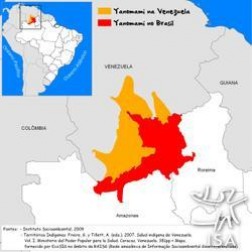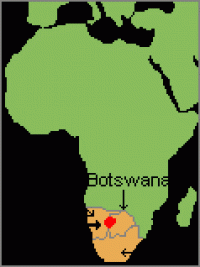INTRODUCTION: what are the geographical & cultural backgrounds of the representative foraging societies?

The YANOMAMI, also known as the Yanomamo and Yanoama, are a group of native South American Indians. They dwell in the dense tropical rainforest in the northern region of the Amazon River basin, on and around the border between Brazil and Venezuela. They live in widespread villages of 100 or so individuals and practice horticultural gardening in addition to their hunting and gathering ways(1). They are an aggressive people by nature, and warfare is a central component of their identity(2). Many of the Yanomami have remained completely isolated, politically and culturally, from the nationalizing and industrializing world around them. Some groups, however, are facing or have already fallen victim to acculturation at the hands of external societal forces.

. The JU'/HOANSI are a historically food-foraging people who inhabit southern Africa's Kalahari Desert. At present, they occupy a territory that covers parts of northwestern Botswana, northeastern Namibia, and southern Angola(3). In the past they have been known by anthropologists as the !Kung San, and they are frequently lumped together with the handful of southern African hunter-gatherer peoples referred to collectively as Bushmen. The Ju'/hoansi population numbers about 15,000. It is divided up among numerous small kinship-based communities, some of which are sedentary and some of which are nomadic(4). The people speak a tonal language that features a system of clicking sounds(5). In recent decades, they have begun to branch out into herding and agriculture to supplement foraging in their subsistence economy.
References:
1. Smole 1976
2. Salamone 1997
3. Barnard 2007
4. Barnard 1992
5. Shostak 2000
References:
1. Smole 1976
2. Salamone 1997
3. Barnard 2007
4. Barnard 1992
5. Shostak 2000
